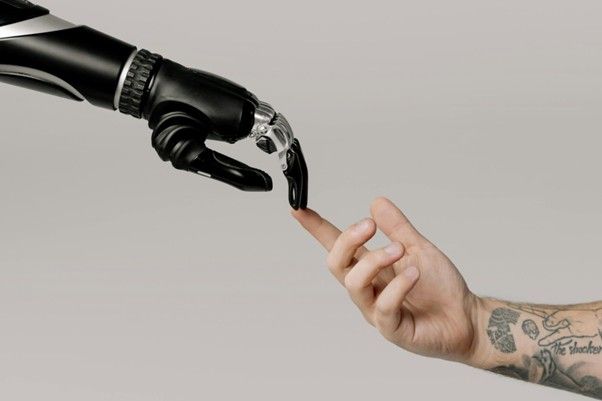Artificial Intelligence
Is AI Capable of Original Thought? Exploring True Novelty in 2025
- Aug 6, 2025

For years, I've been asked if machines can think. Lately, the question has become more specific: can they have an original thought? As someone who has spent a career exploring AI and cognitive science, I find this question cuts to the core of both technology and what it means to be human. AI produces impressive outputs daily, but are these genuinely new ideas or just sophisticated remixes? Research from 2025 provides evidence for a multi-faceted answer.
What "Original Thought" Actually Means
Researchers recognize three distinct types of creativity that help us evaluate AI's capabilities:
- Combinatorial creativity: Mixing existing ideas in new ways, like combining architectural styles with space imagery.
- Exploratory creativity: Pushing established concepts to their boundaries, similar to experimenting within a musical genre.
- Transformational creativity: Creating entirely new frameworks that redefine fields, like Einstein's relativity theory.
Most human creativity falls into the first two categories, with transformational breakthroughs being rare. This framework helps us assess where AI succeeds and where it falls short. For a deeper look into how originality drives success across industries, see Advertising Week's analysis on the value of original thinking(https://advertisingweek.com/the-value-of-original-thinking/).
How AI Systems Generate Novel Outputs
Modern AI creates new content through sophisticated mechanisms that extend beyond simple pattern matching:
Advanced Neural Architectures
DALL-E 3 uses a diffusion process conditioned on natural language prompts, leveraging CLIP for image-text alignment while integrating with ChatGPT for multi-step, context-aware prompt generation. This architecture enables iterative output refinement that produces combinations humans rarely explore.
Text-to-Music Generators combine variational autoencoders (VAEs) with transformer models. VAEs enable encoding and decoding of musical information with feature recombination, while transformers provide temporal structure and semantic control over long-range dependencies. This allows for the generation of compositions that blend genres or create new musical motifs.
Enzyme Stabilization AI Systems employ protein structure prediction and sequence optimization neural networks, using transformer-based architectures to map amino acid sequences to stability profiles. These systems generate novel enzyme variants through high-dimensional sequence space exploration guided by in silico fitness functions and reinforcement learning.
Pattern Detection Across Vast DatasetsAI identifies connections across massive data collections that humans miss due to cognitive limitations. These systems analyze thousands of examples to discover technically valid but underexplored combinations, then create variations that maintain coherence while feeling fresh.
Real Examples of AI Novelty in 2025
| Domain | Novelty Rating | Implementation Success | Assessment Method |
|---|---|---|---|
| Music Composition | 72% indistinguishable from human | 48% commercial viability | Blind expert evaluation |
| Scientific Hypotheses | 67% judged plausible | 31% experimentally verified | Peer review assessment |
| Engineering Design | 62% preferred over human-only | 58% improved performance | Head-to-head comparison |
Several domains demonstrate AI's capacity to generate outputs perceived as novel:
Scientific Research: In 2024, ML systems using "Mutate Everything" algorithms predicted stabilizing mutations through Stability Oracle and MutComputeX prediction models. These systems achieved greater speed and accuracy than previous methods, resulting in enzymes with enhanced yield and stability that human researchers had not considered.
Creative Arts: Writers given AI assistance showed an 8.1% increase in story novelty compared to those without AI support. Writers with lower baseline creativity benefited most, achieving up to 10.7% novelty gains. The more AI ideas writers could access, the higher their novelty scores 13.
Engineering Design: AI-generated solutions using AlphaFold2, RoseTTAFold, and diffusion models were preferred over human-only designs in 62% of blind tests. These featured novel protein folds, enhanced binding affinities, and improved stabilization strategies with superior functional performance.

Novelty Assessment: Methodology and Criteria
Objective Novelty Rating Judges compare new work against prior examples using a standard rubric from 1 (Not novel) to 4 (Completely new). Work rates as novel if it differs from known prior works in core facets: purpose, mechanism, evaluation method, or domain application. Scores are averaged across judges, with large disagreements leading to an entry's exclusion.
Implementation Success Evaluation This assesses whether work functions as intended, evaluating technical feasibility, reliability, and execution quality. The methodology distinguishes between efficacy (does it work?) and implementation quality (how well does it work in practice?).
Objective vs. Subjective Innovation
- Objective innovation: Factual novelty against literature using predetermined criteria.
- Subjective surprise: An individual judge's instinctive reaction to unexpected outputs.
- Leading approaches use objective criteria while optionally recording subjective responses separately.
The Human-AI Creativity Partnership
The 8.1% novelty increase in AI-assisted stories raises questions about attribution. Current studies do not quantify the individual contributions between:
- AI's generative capabilities
- Human prompt engineering skills
- Writer curation and selection abilities
- Human integration and refinement of AI suggestions
This suggests AI functions as a creativity amplifier rather than an autonomous creator. The novelty boost reflects a combination of AI generative output and human creative integration skills.
Where AI Falls Short: The Originality Ceiling
Despite these impressive achievements, this is where the current technology hits a philosophical wall for me. It's a high-tech, beautifully decorated wall, mind you, but a wall nonetheless. AI still faces fundamental limitations:
Training Data Dependency: Every AI output derives from patterns in its training data, systems cannot create truly new concepts ex nihilo. This creates an "originality ceiling" where AI can recombine and extend human knowledge in interesting ways but cannot transcend it.
Lack of Transformational Capability: AI cannot produce groundbreaking ideas that redefine entire fields. While excelling at recombination and variation, it cannot make the conceptual leaps that characterize transformational creativity. No AI has invented anything comparable to cubism or quantum mechanics, paradigm shifts requiring an intentional rejection of established frameworks.
Absence of Intrinsic Motivation: AI lacks desires, curiosity, or purpose. It optimizes for human-set objectives, making its "creativity" fundamentally reactive rather than self-directed. Without intrinsic motivation, AI cannot independently pursue meaningful creative directions. For more on why consciousness and purpose are crucial for genuine originality, see this exploration of AI consciousness and original thought. (https://www.enate.io/blog/will-ai-develop-consciousness-and-original-thought).
Inability to Judge Value: While AI mimics aesthetic judgments based on training patterns, it cannot independently determine what makes ideas meaningful beyond statistical correlations.
Techniques to Overcome AI Limitations
Researchers are exploring several approaches to push beyond current constraints:
Continual Learning: This enables incremental learning from new data without full retraining, incorporating real-time human feedback for dynamic model updates while focusing on task adaptation without catastrophic forgetting.
Neuro-Symbolic AI: These systems combine neural network pattern recognition with symbolic reasoning, enabling the manipulation of logic, rules, and concepts. This allows for reasoning over new situations beyond training data extrapolation with inspectable and updatable reasoning components.
Human-in-the-Loop Learning: Real-time feedback guides models to acquire new skills, pushing the boundaries of conceptual generation capabilities beyond static training data limitations.
Synthetic Data Generation: Algorithmically generated data supplements human-authored datasets, though recursive use risks "model collapse" that degrades generation quality over time.
What This Means for AI Originality
Based on current evidence, AI demonstrates impressive combinatorial and exploratory creativity but lacks the intentionality, purpose, and conceptual freedom needed for transformational originality.
The most effective applications pair human intention with AI's combinatorial abilities:
- Professionals use AI to rapidly explore design variations.
- Researchers employ AI to identify unexpected connections between fields.
- Artists collaborate with AI to expand their creative range while maintaining aesthetic control.
AI functions best as a creativity accelerator rather than an autonomous creative entity. The future belongs to human-AI creative partnerships where each contributes unique capabilities.
So, the answer to our question is complex. AI can generate outputs that appear novel through sophisticated recombination and pattern exploration, but this is amplified human creativity, not independent machine originality. A little joke I tell my students is that AI is a fantastic collaborator, but it will never have a mid-life crisis and decide to take up abstract painting on its own. That kind of transformational creativity, the sort that reshapes entire fields, remains, for now, uniquely human.
